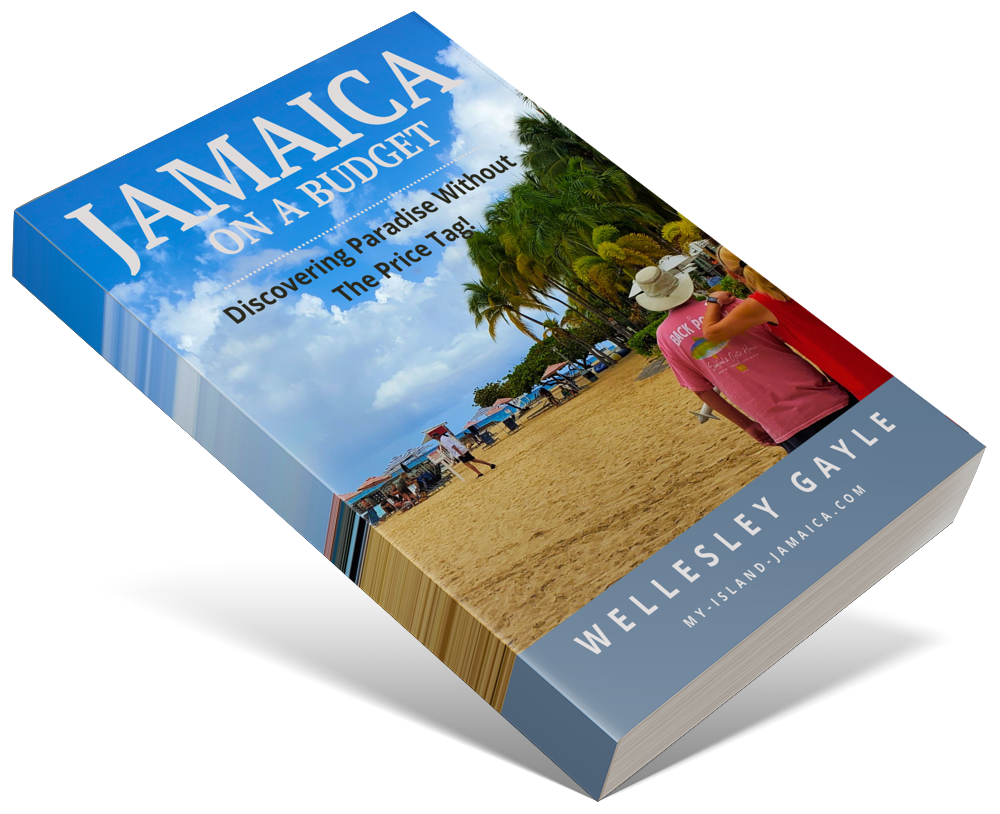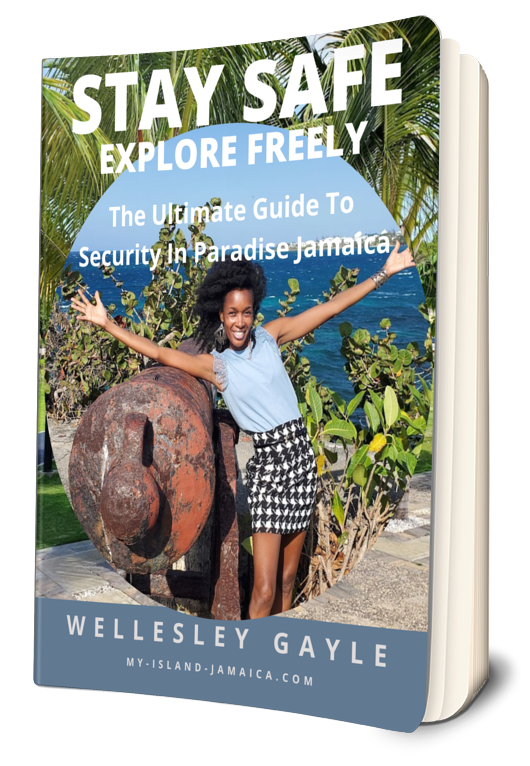Subscribe for all my updates and don't miss a thing! Sign me up!
do spiders really rain in Jamaica?
do spiders really rain in Jamaica?, Answered by Isreal, Associate Writer
No, it doesn’t rain spiders in Jamaica, not sure where the idea comes from - even though Jamaica has a few thousand spiders including four of the world’s most deadly.
Yes spiders love warm temperatures and the tropical climate makes it a haven, spiders love warm dark places on a whole.
By the way, there was a rare case as reported by the UK Daily Mail Online on September 10, 2017, where a young lady on honeymoon in Jamaica was bitten by a brown recluse spider.
But spiders are in fact, a lot more common in other parts of the word, such as the United States, than in Jamaica. So read on!
Spider Reality
There are six (6) important facts to consider about spiders:
- Spiders have self-oiling legs so they do not get caught in their own webs.
- There are 43,000 different species of spiders in the world.
- Only 30 of the 43,000 species are dangerous, which is less than 1%.
- The reason why the small proportion are said to be dangerous is mainly due to the size of the spider in comparison to a human being.
The fact is, the amount of venom from a spider deposited in a human may cause allergic reactions but is inadequate to result in death. - As I indicated earlier, spiders love warm and dark places and this is anywhere in the world that is warm. So they'll gravitate to the tropics.
- Studies claim that spiders have personality and those who are more aggressive prefer the cooler temperatures (Be careful in the temperate zone such as North America, Australasia and Europe)
How about the most dangerous spiders to avoid?
Below is a list of the world’s most feared spiders. I will also identify the dangerous spiders that can be found in Jamaica as well.
World Most Deadly Spiders
- Brown Recluse Spider (Loxosceles Reclusa)
This is one of the most dangerous in the United States and is found in the southern and western parts of the country.
They are from a quarter inch to an inch in size (.25-1 inch) and have dark-‘violin’ shaped designed necks with a furrow in the midline of its back. The bite of this spider can produce skin ulcers which may become infected and then lead to death.
It does this by destroying the walls of the blood vessels at the skin and those cells nearby.
They mostly live in undisturbed places. So be careful of those attics and garbage areas over a prolonged period. This spider is present in Jamaica and is responsible for the event with the young lady honeymooning in Jamaica back in 2017. - Brazilian Wandering Spiders or Banana Spider (Phoneutria Fera and P. Nigriventer)
Mostly found on banana leaves, their venom attacks the nervous system causing salivation, irregular heartbeat and prolonged painful erections in men. They are also present in Jamaica.
Here is a YouTube link showing a Jamaican man with a banana spider on his forehead (Still dangerous). - Yellow Sac Spider (Cheiracanthium Inclusum)
This spider ranges in body size from .12 inches to .6 inches. They are said to be mostly found in United States and Mexico through southward to South America.
They can be found in grass, on leaves and under stones. They mostly prefer the indoors and build silken tubes. This spider’s venom is cytotoxic which destroys and impairs cell function. - Wolf Spider (Family Lycosidae)
This spider is present worldwide. They are called wolf because this spider will chase the prey and pounce.
They are mostly prevalent in North America with 125 species and Europe with 50 species. They can also be found north of the Arctic Circle. They are usually small to medium in size not exceeding an inch with dark brown hairy body.
They bear similarity with the yellow sac, in that they can be found outdoors in grass, under stones and in leaf litters but their running speed is remarkable.
This spider bites in self-defence unlike the others previously mentioned. Symptoms of the bite include: trauma at the bite spot and itchiness, nausea, dizzy spells and elevated heart rate. - Black Widow Spider (Latrodectus Mactans)
This spider is predominant in Jamaica (The West Indies), United States of America, Canada and Latin America.
However, it is mostly popular in North America. It lives among woodpiles, burrows and plants. The female is shiny and black with a reddish yellow design on the abdomen or two (2) small triangles. It does not grow above an inch.
The males are less seen due to the fact that the females often times eat them after mating. The male is a quarter of the female’s size.
This spider is known mostly known to kill young children and the elderly. This is due to its pin-prick bite that causes muscle pains, cramps, nausea and mild paralysis to the diaphragm which makes breathing difficult. - Brown Widow Spider (Lactrodectus Geometricus)
Twice as dangerous as the black widow spider. This spider is usually found in Jamaica (Caribbean), Southern California, US States of the Gulf Course, Japan, South Africa, Madagascar, Australia and Cyprus.
It can be found in buildings, old tires, under automobiles and plants. Otherwise from the brown versus black colour, the brown widow spider’s abdomen has an ornate dark- brown, black, white, yellow or orange markings.
The hour glass marking is also different in colour, which is orange. The good news is that the brown widow is less likely to attack than the black widow. - Red Widow Spider (Lactrodectus Bishopi)
Mostly found in southern and central Florida in the palmetto dominated areas. It has a reddish cephalothorax and legs.
Its abdomen is reddish-brown to black. Similar to black widow with the hour glass or triangle mark on the abdomen but sometimes the mark is indistinct.
In the case of the red widow spider the legs of the female range from 1.5 to 2 inches in length while the male ranges from .5 to .66 of an inch. This spider feeds on other insects more than humans but in self-defence will bite or in protection of its eggs.
The symptoms of the bite are similar to the black widow with cramps, nausea and muscle pain. - Redback Spider (Lactrodectus Hasselti)
They care cousins to the black widow spider. They are native to Australia but due to grape export has reached New Zealand, Belgium and Japan. The spider builds webs on grape leaves and on bunches.
It does not reside in the hottest deserts or frigid mountain tops of Australia. Usually not aggressive and will even play dead when attacked. However, if the female believes that her eggs are in danger then she bites.
It has a red-stripe or hour glass mark on its black back. The venom is mixed with neurotoxins and alpha-latrotoxins. This produces pain, sweating, rapid heartbeats and swollen lymph nodes.
Unlike the other spiders, the redback can moderate how much venom is injected into the victim and this is the determination of severity.
- Funnel-Web Spider (Family Dipluridae)
They are named after their funnel-shaped webs where they stay at the narrow section and wait on the unfortunate insect prey. Funnel web spiders are found in North America, South America and Australia. The most poisonous genera are found in Australia called the Atrax.
The Atrax Robustus and A. Fomidabilis are found in southern and eastern Australia where they are highly feared. Survival is possible from a bite once the antidote is given soon after.
Common Jamaican Spiders
- Giant House Spiders
Usually grow up to four (4) inches and either are dark brown, orange or beige. They are not a threat humans and the venom not potent enough to harm. - Daddy Long Legs
The most common in Jamaica and grows up to 1.7 inches. It is the most venomous house insect but will not be lethal to humans due to our size.
Bite Prevention Tips:
- Wear heavy gloves when moving things stored for a long time
- Shake out shoes and clothes before wearing them when it’s been kept in a dark place.
Top 5 Jamaica Spider Control Companies
- Rentokil Pest Control
10 Terrace Ave. Kingston 8
Tel: 876-926-4236 - ProPest Limited
Shop 11, 137 Maxfield Ave. Kingston 10
Tel :876-754-7530 - Target Pest Management Company
9 Ripon Rd. Kingston 5
Tel: 876-968-2537
Web: www.Targetpestmc.com - Terminex Pest Control Limited
21A Main Street, Stony Hill, Kingston 9
Tel: 876-756-2536
Cell: 876-293-3201
Email: admin@terminexpestcontrol.com
Web: www.terminexpestcontrol.com - Orkin Jamaica
5A Haughton Ave. Kingston 10
Tel: 876-906-2306
Email: info.orkin@gaurdsmangroup.com
Web: www.orkin.com.jm
References
- Australian Museum. 2018. Spiders are Everywhere taken from https://australianmuseum.net.au/spiders-are-everywhere
- BT. 2018. 10 Common Spiders You’re Likely to Find in a British Home taken from http://home.bt.com/lifestyle/house-home/cleaning/10-common-spiders-youll-find-in-a-british-home-11364003665066
- Encyclopaedia Britannica. 2018. 9 of the World’s Deadliest Spiders taken from https://www.britannica.com/list/9-of-the-worlds-deadliest-spiders
- Harvey, Chelsea. 2016. How These Spiders Handle Climate Change will Depend on their Personalities. Energy and Environment taken from https://www.washingtonpost.com/news/energy-environment/wp/2016/07/28/how-these-spiders-handle-climate-change-will-depend-on-their-personalities/?noredirect=on&utm_term=.acb17a29a8a3
- McLaughlin, Kelly. 2017. Newlywed Bride, 32, Nearly Dies After Being Bitten by Venomous Spider on Jamaican Honeymoon Daily Mail Online taken from https://www.dailymail.co.uk/news/article-4870064/Bride-32-bit-venomous-spider-Jamaican-honeymoon.html
- PestWorldforKids. 2018. Spiders taken from https://pestworldforkids.org/pest-guide/spiders/
- TheSchoolRun.2018. What are Spiders? Taken from https://www.theschoolrun.com/homework-help/spiders
New! Get My Latest Book👇🏿
|
You asked, I've answered! You no longer need to save for months or years, to enjoy paradise! I spilled the beans! sharing my top tips on finding cozy accommodations and secret gems, only the way a native could! Click Here to pick it up on my e-store and start saving now! |
See The Best Of Jamaica - In Videos!
|
My channel reaches over 140,000 subscribers worldwide and has leveraged over 11 million views, sharing, what I call 'The Real Jamaica'. Subscribe today and join our family of viewers. |
Read More ...
New! Experience The REAL Jamaica!
Book Your Private Tour here and experience Jamaica the way we (locals) do!
P.S. Didn't find what you were looking for?
Still need help?
Click Here to try our dependable and effective Site Search tool. It works!
Or, simply click here and here, to browse my library of over 500 questions and answers! Chances are someone already asked (and got an answer to) your question.











